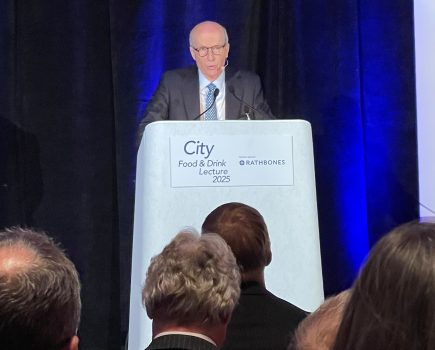More by accident than judgment, harvest 2024 produced a respectable result. The wheat I managed to drill in October last year was on dry land so it survived the Biblical (or should that be ‘climate-change induced’?) quantities of rain that occurred immediately after sowing.
Such was the deluge that I was prevented from drilling on my heavier land and ended up with a min-till sown spring bean crop that performed well, thanks to the regular rains we enjoyed throughout the summer. With last year’s harvest safely in the barn, and this year’s autumn sowing programme now completed under ideal conditions, I should be feeling upbeat about the farm’s arable enterprise.
But, as any grower knows, ‘upbeat’ is not the word. Arable commodity prices, despite a minor post-harvest rally, remain alarming. The best bid I’ve received for my feed wheat is £179 per tonne, alongside £206 per tonne for my beans. Set against the input costs that arable farmers face, and the quickening disappearance of Basic Payments (BPS), these prices are catastrophic.
As it happens, 2024 is the 30-year anniversary of the biggest risk I ever took in my farming career when I bought a block of 160 hectares of poor-quality arable downland. This land was so steep that the John Deere Hillsider combine that I bought especially to harvest it used to sound its warning siren that I was exceeding the ‘tilt safety limit’. The previous farmer had made a much better living harvesting flints from it.
But although that was 30 years ago, the economics of arable farming in 1994 remain clearly etched in my memory. Grain prices were £110 per tonne, bulk urea fertiliser cost £80 per tonne, red diesel 5p per litre and a good, second-hand 125hp tractor was £12,000. Its driver’s annual salary was a princely £13,000.
You don’t have to be a brilliant agricultural economist to understand how poorly current arable farming profit margins compare to those halcyon days. While the price of grain has risen barely 50% over the past three decades, the cost of inputs has more than trebled over the same period.
So what will arable farmers do? Reports are that many of them are entering large quantities of land into Sustainable Farming Incentive tiers that involve breaks in production like the planting of legumes. This seems like a sensible option on poorer land, but it is unlikely to plug the gap left by the disappearance of the BPS or help with the daunting costs we now face, much of them driven by the current cost of energy.
For comfort, I keep looking at my grain stores bursting with old crop. But, try as I might, I can’t suppress the feeling that my arable enterprise currently faces more financial challenges that it has done at any time since 1994.
For more like this, sign up for the FREE South East Farmer e-newsletter here and receive all the latest farming news, reviews and insight straight to your inbox.







